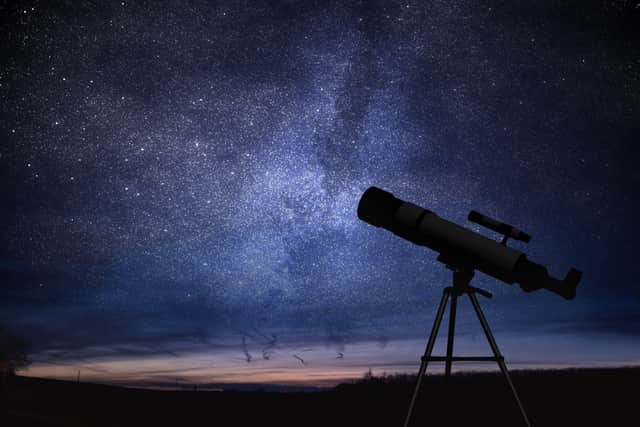Rare chance to see five planets align in the sky from the UK this weekend
and live on Freeview channel 276
Five planets will line up in the sky and some will be visible to the naked eye from the UK this weekend.
The alignment of the planets Mercury, Uranus, Jupiter, Neptune and Saturn will take place at dawn on Saturday (17 June), in a process known as a planetary parade.
Advertisement
Hide AdAdvertisement
Hide AdDon Pollacco, a professor at the University of Warwick’s Department of Physics, said: “Jupiter and Saturn will be easy to spot by eye” but Mercury “will be more challenging as its proximity to the sun means that it is only just above the horizon and visible about an hour before sunrise.”
He added that those wanting to see all of the planets in alignment will need binoculars for Neptune and Uranus “although some keen-sighted people can see Uranus unaided.”
Jupiter and Saturn will be easier to spot than the other planets due to their brightness.


Professor Pollacco explained: “Jupiter and Saturn will be bright objects that have a yellowy colour, Mercury often looks pink, and Uranus and Neptune pale white-green.”
Advertisement
Hide AdAdvertisement
Hide AdSaturn will be the first to rise on Saturday followed by Neptune, Jupiter, Uranus and Mercury.
The next five-planet alignment will take place on 20 April next year which will be a morning parade with Venus, Mercury, Neptune, Mars, and Saturn.
Professor Pollacco said that scientists can now “predict when these ‘alignments’ will occur” as “we understand the orbits of the planets”.
He reminded budding astronomers and stargazers that “while the planets may look relatively close together in the sky they are of course separated by many millions of miles.”
Advertisement
Hide AdAdvertisement
Hide AdFor those wanting to see the phenomenon, NASA has recommended checking the weather forecast to find a cloudless area.
It is advised to choose somewhere with an unobstructed view of the horizon, avoiding buildings and any glaring city lights.
Binoculars will be needed to spot the less obvious planets such as Neptune and Uranus.
Comment Guidelines
National World encourages reader discussion on our stories. User feedback, insights and back-and-forth exchanges add a rich layer of context to reporting. Please review our Community Guidelines before commenting.
